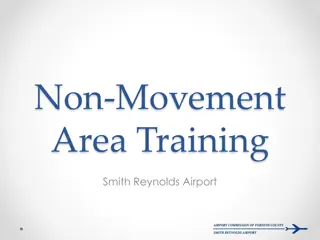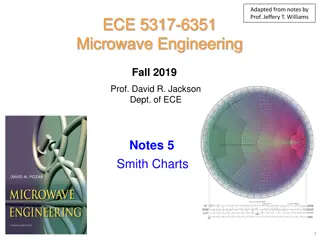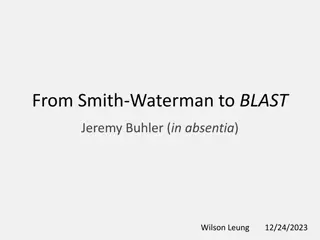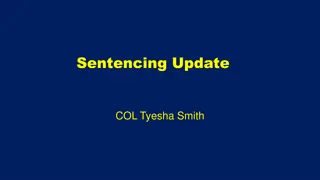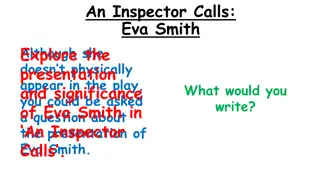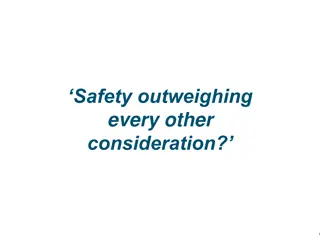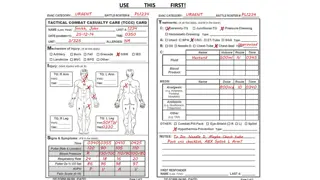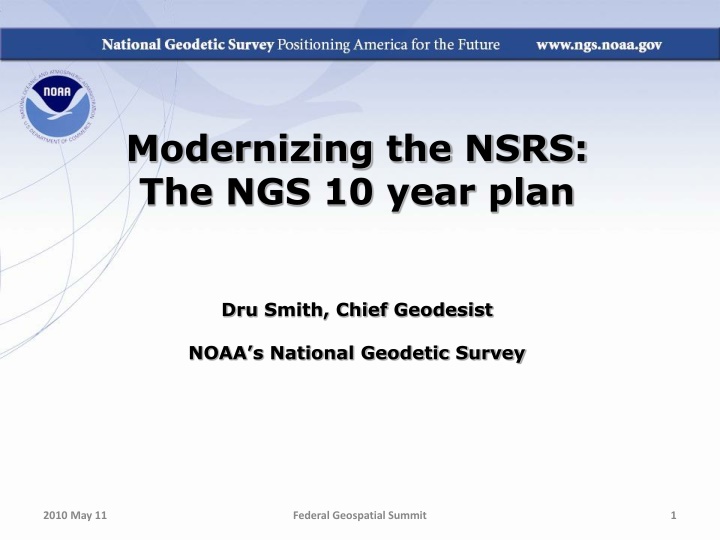
NGS 10-Year Plan and Modernization of NSRS: Key Insights from Federal Geospatial Summit
Learn about the National Geodetic Survey's 10-year plan for modernizing the National Spatial Reference System (NSRS). Explore the NGS's role, authority, and transition strategies as outlined in key federal documents and acts. Gain insights into the importance of geodetic control surveys and the significance of datums in accurate spatial data registration.
Download Presentation

Please find below an Image/Link to download the presentation.
The content on the website is provided AS IS for your information and personal use only. It may not be sold, licensed, or shared on other websites without obtaining consent from the author. If you encounter any issues during the download, it is possible that the publisher has removed the file from their server.
You are allowed to download the files provided on this website for personal or commercial use, subject to the condition that they are used lawfully. All files are the property of their respective owners.
The content on the website is provided AS IS for your information and personal use only. It may not be sold, licensed, or shared on other websites without obtaining consent from the author.
E N D
Presentation Transcript
Modernizing the NSRS: The NGS 10 year plan Dru Smith, Chief Geodesist NOAA s National Geodetic Survey 2010 May 11 Federal Geospatial Summit 1
Outline NGS and datums Accuracy vs. constancy The NGS 10 year plan Transitioning 2010 May 11 Federal Geospatial Summit 2
NGSs role and authority vis-a-vis datums (1 of 6) Coast and Geodetic Survey Act (Public Law 80-373) gives the Department of Commerce the right to (amongst numerous other things): conduct geodetic control surveys http://uscode.house.gov/download/pls/33C17.txt 2010 May 11 Federal Geospatial Summit 3
NGSs role and authority vis-a-vis datums (2 of 6) OMB Circular A-16 (revised): Names DOC and NOAA as lead agency for Geodetic Control, and says: All NSDI framework data and users' applications data require geodetic control to accurately register spatial data. The National Spatial Reference System is the fundamental geodetic control for the United States. 2010 May 11 Federal Geospatial Summit 4
NGSs role and authority vis-a-vis datums (3 of 6) OMB Circular A-16 (revised): Because NGS is the only agency inside DOC or NOAA that sets geodetic control, the NSRS responsibility falls to NGS. The NGS mission reflects this OMB-granted responsibility: NGS Mission: To define, maintain, and provide access to the National Spatial Reference System to meet our nation s economic, social, and environmental needs www.whitehouse.gov/omb/Circulars/a016/a016_rev.html 2010 May 11 Federal Geospatial Summit 5
NGSs role and authority vis-a-vis datums (4 of 6) FGCC Federal Register Notice (Vol. 54, No. 113, 1989) Affirms NAD 83 as the official civilian horizontal datum for U.S. surveying and mapping activities performed or financed by the Federal Government. Furthermore, to the extent practicable, legally allowable and feasible, all Federal agencies using or producing coordinate information should provide for an orderly transition from NAD 27 to NAD 83. http://www.ngs.noaa.gov/PUBS_LIB/FedRegister/FRdoc89-14076.pdf 2010 May 11 Federal Geospatial Summit 6
NGSs role and authority vis-a-vis datums (5 of 6) FGCS Federal Register Notice (Vol. 58, No. 120, 1993) Affirms NAVD 88 as the official civilian vertical datum for surveying and mapping activities in the United States performed or financed by the Federal Government. To the extent practicable, legally allowable, and feasible, require that all Federal agencies using or producing vertical height information undertake an orderly transition to NAVD 88. http://www.ngs.noaa.gov/PUBS_LIB/FedRegister/FRdoc93-14922.pdf 2010 May 11 Federal Geospatial Summit 7
NGSs role and authority vis-a-vis datums (6 of 6) Summary: OMB A-16 establishes DOC/NOAA (implying NGS) as lead agency for NSDI geodetic control (the NSRS) NGS has defined the horizontal/vertical datum portions of the NSRS as NAD 83/NAVD 88 FGCC/S agrees that all civilian federal surveying and mapping be in NAD 83/NAVD 88 These regulations do not apply to DoD nor to state and local surveying, but these groups often do adopt the NSRS. Federal Geospatial Summit 2010 May 11 8
NGS 10 year plan Drafting and vetting to the public took 18 months Official NGS policy as of Jan 2008 By 2018, without reliance on passive geodetic marks: Replace NAVD 88 with a GNSS/geoid datum Replace NAD 83 with a geocentric GNSS based datum 2010 May 11 Federal Geospatial Summit 9
Accuracy vs. Constancy NGS is an agency based in science, and always seeking accuracy and truth in positioning The Earth is dynamic / coordinates change NGS is an agency with a large user base that relies on near constancy of coordinates Some dynamics can be modeled and removed for near-constancy (N.A. plate rotation : lat / lon) Some dynamics should be tracked and regularly accounted for (subsidence in the Gulf coast : ht) 2010 May 11 Federal Geospatial Summit 10
Accuracy vs. Constancy Static datum: Coordinates do not change. Dynamic datum: All coordinates change (ITRF) Semi-dynamic datum: Changes are tracked at NGS, but not necessarily part of the datum unless they exceed some critical level 2010 May 11 Federal Geospatial Summit 11
Transition Example: Digital TV Radio Frequency Spectrum is like real estate . Only so much to go around. Somebody thought: If we use multiplexing, and broadcast digital signals, we can get 5 times as many broadcasts in the same radio frequency spectrum! 2010 May 11 Federal Geospatial Summit 12
Transition Example: Digital TV 1996 Congress: Transition coming in 2006! 2005: Analog TVs still being mass produced Congress: Um, how does February 2009 sound? 2006: Analog TVs still being mass produced Congress: Hey, we re serious 2009 is coming 2008: FCC finally creates a DTV website Feb 2009: Too few people have converters Congress: How does June2009 sound? 2010 May 11 Federal Geospatial Summit 13
Transition Example: Digital TV At its core, this transition went poorly for many reasons, but one in particular: There wasn't a perceived need to convert to digital. TV isn't a necessity. (Though Emergency Readiness?) Nonetheless, available spectrum was running out with all the new technologies and making efficient use of existing spectrum made a lot of sense to those who understood and cared A classic example of a solution to a problem that people didn t know existed. 2010 May 11 Federal Geospatial Summit 14
A problem that does exist The White Paper should explain the problems and raise awareness of them The burning question is no longer why but how Moving forward must be done with contemplation, caution and commitment 2010 May 11 Federal Geospatial Summit 15
With great power comes great responsibility 2010 May 11 Federal Geospatial Summit 16




